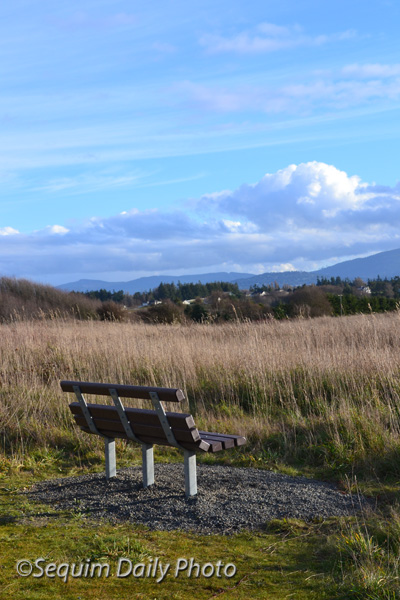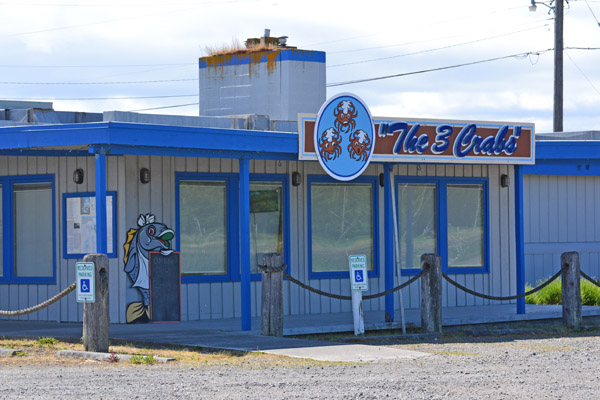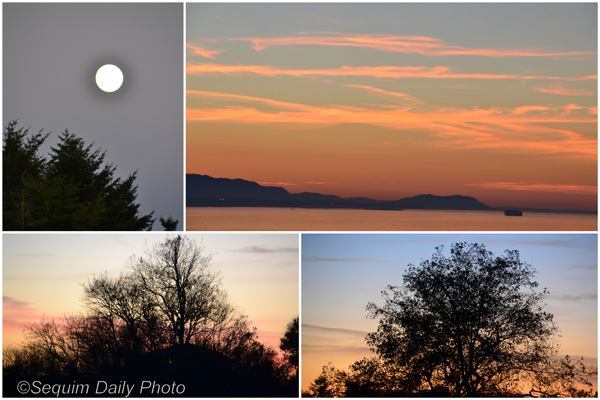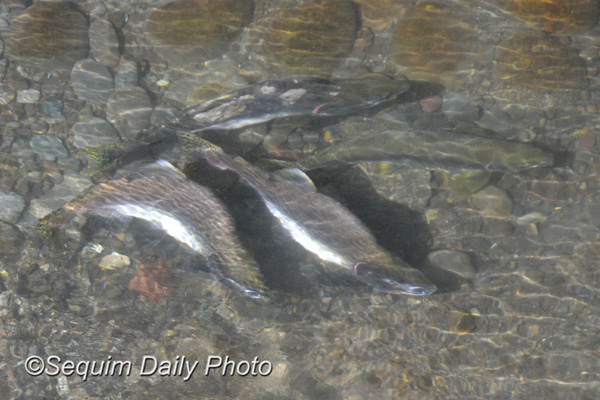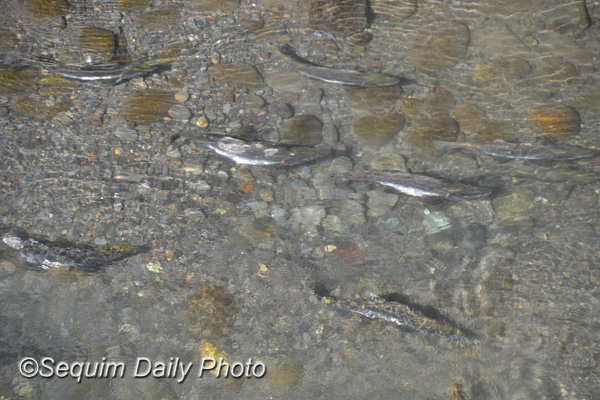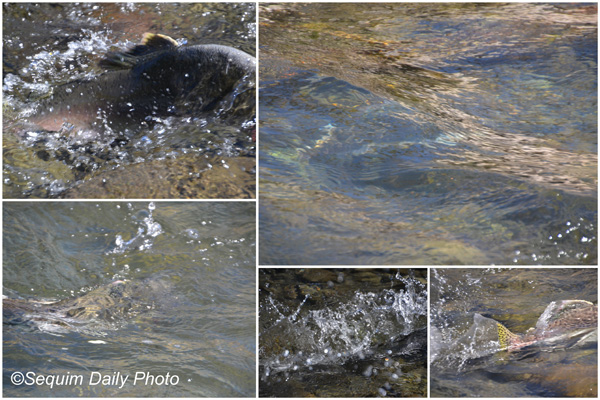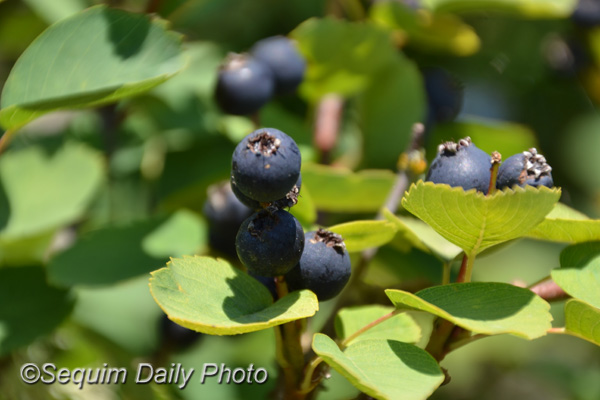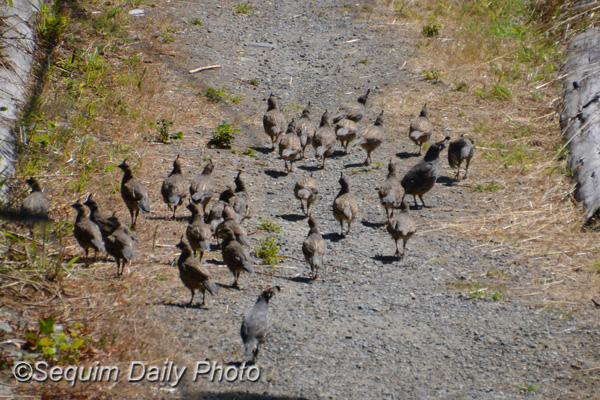Dungeness Recreation Area is a great place to walk and now that hunting has been discontinued there it’s even more welcoming. This new bench was installed recently and trails have been better groomed.
Category: Dungeness
Three Crabs
The 3 Crabs Restaurant, once a pilgrimage on many a tourist’s itinerary, was demolished over the course of a week last month leaving little more than a foundation, a chain link fence, and a porta-potty.
The building above had stood since 1958 and was sold to the state Department of Fish and Wildlife as part of a habitat restoration project. The restaurant was adjacent to tidelands and estuary habitat and the 52-acre property will provide beach access and eventually support efforts to restore salmon habitat.
In the meantime I was amused to see that State Parks hasn’t wasted any time in encouraging the public to bring along a Discover Pass in case anyone wants to spend time touring the exciting fence and foundation.
Full moon walk
Pink salmon
Earlier this week I posted a photo collage of the Dungeness River. There’s currently a huge run of spawning pink salmon. A day or two ago I found a better vantage point for fish-watching. There were dozens of fish, literally as far as the eye could see. And the closest ones – drat! – were hanging out in the shade.
Here’s a variation on that old “Where’s Waldo?” theme. There are seven fish in this shot. Can you see them?
This pink salmon run is being called the biggest since 1963. Spawning ground surveyors have counted more than 100,000 fish in the Dungeness, all of which are wild-born (they are not hatchery fish).
The Dungeness River
The local paper announced that there is an historically high run of pink salmon spawning in the Dungeness River right now. I had to go take a look. The part of the river that I visited was not optimum for viewing the fish as they struggle up the river, against the current. But I came home with portraits of the water surface, almost Impressionistic, that I rather like. And there are fish mixed in here, too.
Saskatoons
It’s been a great year for native saskatoons or western serviceberry (amelanchier alnifolia). The berries grow on trees of varying sizes in the Dungeness Recreation Area and they’re ripe this month. They’re a favorite of cedar waxwings and small flocks converge on the trees for feasts.
One of our neighbors snacks on these berries and we started grazing, too. Until this year, we were the only humans we saw eating them. This month we met a Cherokee woman who was gathering the berries for a pie and a day or so later encountered an Eastern European couple who insisted they were a type of wild blueberry. In fact, it’s a member of the rose family.
The flock
We came across this flock of California quail (Callipela californica) feeding along the trial last Saturday. I’m posting this not because I think it’s a particularly nice photo but because I was impressed at how many of them there were. I understand that in prolific breeding years quail can have two broods with up to 20 eggs per clutch. I count 29 here, a covey of multiple families.
